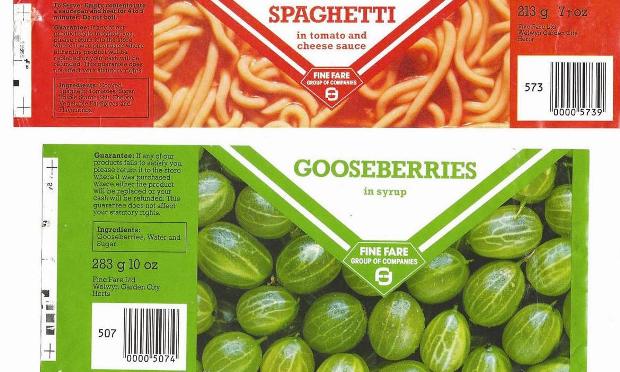
It is now more than 400 years since the first recorded printed labels were being produced. At that time they would have been printed on hand-made paper using relief letterpress type or images cut into wood or metal, with impression pressure applied through a wooden hand press and simple screw mechanism.
The pre-history of labels
It was a further 200 years before much began to change. By the early 19th century, the industrial revolution was bringing significant changes to the world of printing – the first cylinder printing presses powered by steam, the offset printing process, continuous paper making machines.
The 1800s also brought coated paper, the halftone process, colour printing – and a whole host of new label market application requirements that were to see the early beginnings of what we now call the label industry. These new 19th century applications included automatic volume production of standard-sized glass bottles and bottle filling lines, the first canning factories and the rapid growth of pharmacy products. All were now being printed on sheet-fed offset or letterpress presses.
The first part of the 20th century saw the introduction of the first narrow-web presses for printing gummed and self-adhesive tape. The key innovations for the narrow-web printer were developments by Stan Avery that enabled self-adhesive materials to have a backing carrier and be cut to shape on the press. It was die-cutting materials on a liner that now enabled sticky labels to be produced on a roll. It was not long before press manufacturers such as Gallus, Nilpeter and Mark Andy were producing the early dedicated roll-label letterpress and flexo presses.
Late 20th century: emergence of self-adhesive in Europe
Later came narrow-web screen, hot-foil and combination process presses, UV-curing inks and more advanced plate-making technology. By the late 1970s self-adhesive labels had already attained a 7% share of the European label market – with all printing processes being used. Today, self-adhesive labels make up around 40% of label usage, fuelled by a whole host of technology and press innovations over the last 30 years that have enabled labels to be printed faster, on wider webs, using rotary and wrap-around tooling, servo-drive presses, and press controls that include web inspection, register control, colour management, and much more.
Unbelievably, it was not until 1978 that the first retail bar codes were being produced for the Fine Fare Supermarket’s own label products, and the very first time that a velocity code was incorporated on the film masters for the production of the dark vertical bars on the codes.
At this time bar-coded labels for labelling fresh produce in store and at pre-packers was being undertaken with heat-sensitive label stocks. It was not until the 1980s that thermal direct and then thermal transfer printing of bar coded price-weigh labels using self-adhesive materials began to take place and grow rapidly by the later part of the decade.
At about the same time, the use of new types of polypropylene and polystyrene film materials for more demanding label applications were being introduced. High quality printing of filmic materials used for labelling shampoos, toiletries and industrial products were now required by the leading brand owners.
Three decades of evolution in label printing technology
To meet changing label printing requirements over the past 30 years the dominant label printing technology of the time has undergone several changes: in the 1980s it was rotary letterpress that dominated new press sales.
Then came growth in the flexo process during the 1990s. Much of the early part of the 21st century has seen UV flexo as the dominant technology for new label press sales. Since the mid-2000s, digital printing has also begun to evolve quite rapidly, initially with electrophotographic liquid and dry toner technologies and, most recently, with new generations of UV and water-based inkjet.
In the pipeline for launch in 2014 is the newly developed Landa nanographic printing process, an offset inkjet process that has already created significant market interest among label, folding carton and flexible packaging printers.
Without unduly wishing to worry the label converter, there is also considerable development work being undertaken at the present time with the longer-term aim of eventually using inkjet technology to print direct onto glass or plastic bottles or onto a variety of can shapes and sizes. Maybe not a concern for today, but possibly a real threat for the future.
What will the future bring?
Put together, the key challenge today for any label printer is to decide what his new label printing press investment. Will it be another conventional UV flexo analogue press? Or maybe an offset or combination process press? Some converters are perhaps still deciding whether to go digital. If so, will the investment be in toner or the latest inkjet technologies?
When it comes to investing in digital there are various other factors to be considered as well as just investment in a press. Digital printing is all about new ways of working. It’s about enhanced colour management. It’s about making decisions whether to go conventional or digital as late as possible. What throughput of different jobs can be handled each day without getting bogged down in administration and paperwork? For printers, all these factors are likely to require more sophisticated Management Information System.
Accelerating changes in technology: Labelexpo Europe 2013
Looking back, it seems that more changes in printing technology, particularly for self-adhesive label printing processes and technologies, have occurred over the past 50 years than at any other period in the last 400 years.
Even today, change in label printing and converting technology is still continuing to take place.
This will become evident at Labelexpo Europe this year, where new makes and models of label presses will be launched, including ever more printing machinery emanating from Asia and the world of digital printing technology.





